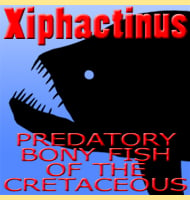Thrissops
In Depth A smaller relative of the fearsome Xiphactinus, Thrissops would have still been a fearsome predator of smaller fish. The tail is deeply forked with the upper and lower lobes roughly equal in proportion to one another, a clear sign that the tail was capable of tremendous bursts of speed. It’s possible that Thrissops … Read more
